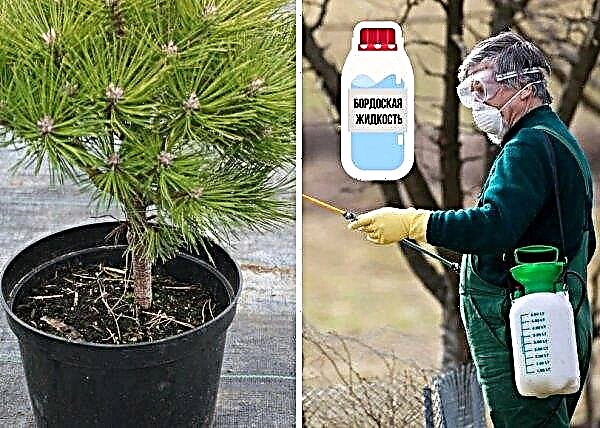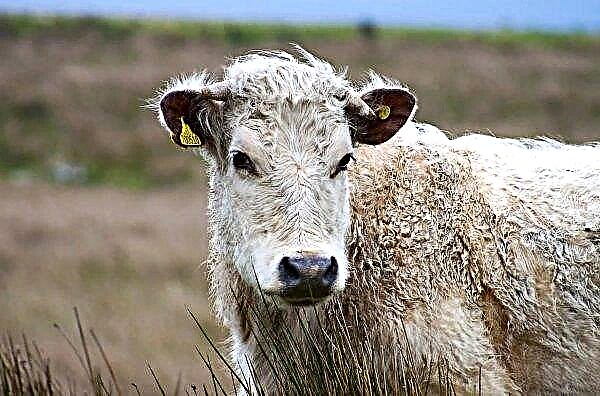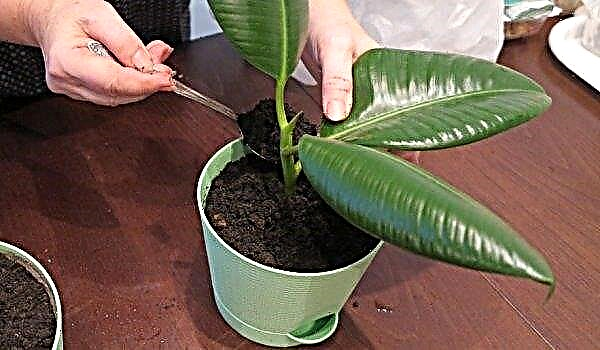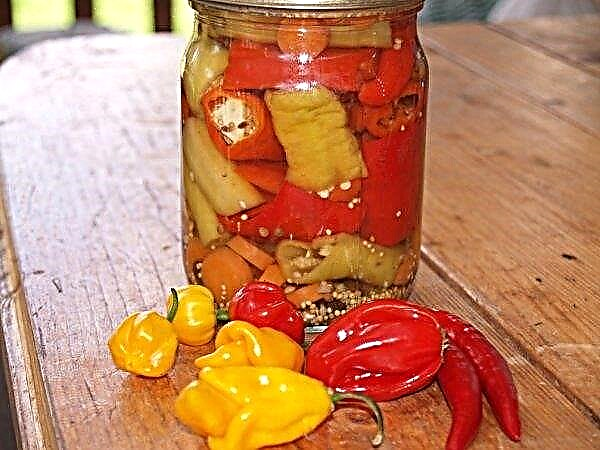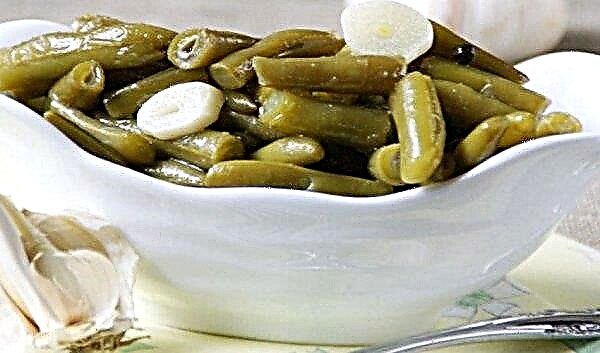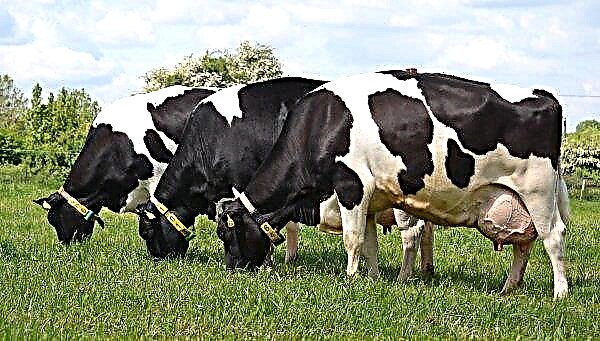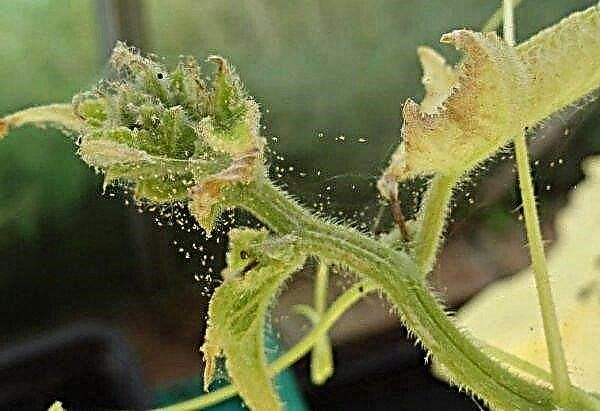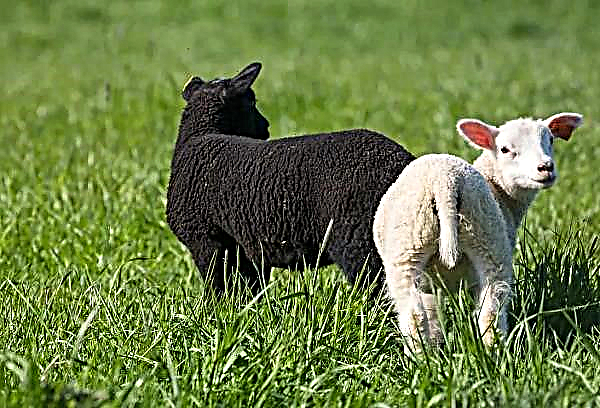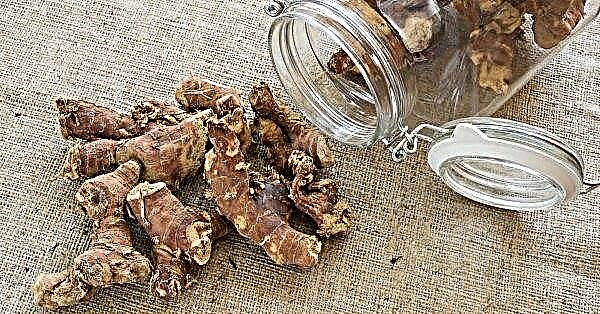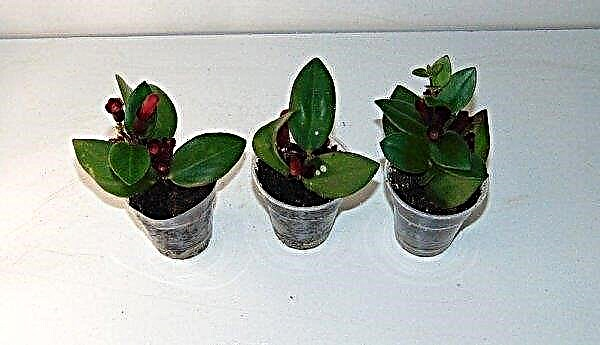One of the most common vegetables on the dining table, in seasonings, marinades and winter preparations - onions. The recently emerged Troy variety has all the necessary qualities for growing and storage: unpretentious in care, ripens early, is stored for a long time. Learn more about it.
Important! All commercial qualities of the hybrid variety are 100% preserved only in the first generation.
Description and characteristics of the variety
Onion Troy is a winter hybrid bred by Dutch breeders. The main characteristics of the culture:
- early ripe variety: from planting to lodging of tops - 75 days;
- bulb of round or flat round shape, resistant to the formation of arrows; brown or dark yellow. Weight - 90 g;
- productivity - 5 kg / m²;
- high quality dry flakes allow mechanized cleaning;
- leaves are dark green, with a wax coating, 20 cm long;
- plant height - up to 45 cm, characterized by good branching;
- photophilous, hydrophilic vegetable. Unpretentious in the cultivation and care of a hybrid of moderate sharp taste;
- frost-resistant plant, resistant to diseases.

Benefit and harm
Due to the medium-spicy taste, onions Troy is widely used in cooking for preparing first courses, marinades, salads. Long-term storage (4-5 months) makes it possible to eat fresh vegetables all year round. The composition of the fruits: volatile, essential oils, micro and macro elements, glucose, high vitamin C.
- The main useful properties:
- stimulation of digestion processes, increased metabolism, improved blood formation, blood purification;
- plant juice - a natural antibiotic: helps in the treatment of tonsillitis and flu, serves as a prophylactic for colds;
- effectively burns fats;
- used in folk cosmetology and medicine: cleanses the skin, disinfects rashes, relieves pain after a bee sting, is suitable for treating non-healing wounds, inflammations, abscesses;
- serves as an excellent adaptive tool when changing time zones;
- provides prevention of the formation of cancer cells due to the content of flavonols;
- useful for diabetes: lowers blood glucose.
However, with gastritis, peptic ulcer, pancreatitis, and disorders of the cardiovascular system, onions should be consumed sparingly: a large amount of onion juice causes an increase in acidity and irritation of the walls of the gastrointestinal tract, and can cause severe pain. It is better for a nursing mother to refrain from fresh onions: because of it, milk acquires a bitter taste with an unpleasant odor. Children under 2–2.5 years old should eat a vegetable that has undergone heat treatment.
Did you know? In ancient Greece, Olympic athletes accompanied training by eating large quantities of onions to improve physical fitness. Later in Ancient Rome gthe gladiators massaged the muscles with onion oil for elasticity.
Growing Features
Onion Troy F1 is a heterotic winter variety characterized by good yield, shelf life and taste. The index F1 in the name means that the agrochemical qualities of the plant obtained by crossing are maximally manifested in the first generation. Planting seed of the next generation is not worth it: the indicators will "fall apart" into their parents and lose their basic qualities. And the definition of “heterotic” indicates that the quality of the hybrid is higher than that of both parent cultures.
Optimal landing times
A good harvest of Troy onions is obtained by correctly and timely planting a sowing, grown from chernushka - seeds that are sown in early spring. You can buy sevoc in a specialty store or grow it yourself. Bulbs should be planted in autumn to get an early harvest of strong onions.
Important! The last top dressing is carried out no later than 30 days before harvesting.
Another advantage of planting in the winter: good vitality and a well-developed root system of the plant. In addition, winter onions are stored longer, resistant to shooting, diseases and pests. Optimum planting period: three weeks before the onset of frost. If the temperature is kept at + 5 ° C for several days and does not rise, then it is time to plant onions.
Preparing planting material
There are several ways to prepare the plant for planting:
- Wipe the bulbs with a solution of copper sulfate.
- Dip the turnip in boiling water for a few seconds.
- Place the bulbs wrapped in cloth in a glass container and send for 90 seconds in the microwave.

Growing conditions
Sunlight and moisture are the rule of getting a good harvest of Troy onions. The site should be in a sunny place, well ventilated. Lowlands, where meltwater gathers in spring or rain accumulates in summer, should be avoided: excess moisture will ruin the crop.
Soil and fertilizer
The best soil composition is loam with a high amount of organic matter, drained soils. On acidic soils, it is necessary to produce liming to obtain a quality crop. Before planting, the bed is dug up, cleaned of weeds and plant debris, humus is introduced. It is best to plant sevocs after pepper, tomatoes, legumes and crops. For two years in a row, planting onions in one place is not recommended.
Did you know? In the Middle Ages, onions were valued so highly that the French during the Crusades bought their captives from the Arabs for it: 8 onions for one warrior.
Sowing technology
For planting onions for the winter, landing in the combs is best suited:
- The bed, dug up and cleared of weeds, is well loosened with a rake.
- The beds are formed: the height of the ridge is 15–20 cm, the row spacing is 60–70 cm.
- 4–5 cm deep grooves are made along the ridge.
- Abundantly watered with water.
- Carefully lay the "turnips", slightly pressing them into the soil, at a distance of 10 cm.
- Sprinkle the seeds with a mixture of peat and humus and cover with soil, slightly compacting the soil with the rake on the back side.
- Before the onset of severe frosts, they insulate the bed with spruce leaves, fallen leaves. Cover with fallen snow.

Basic care rules
Winter Troy is an unpretentious plant. After the onset of spring, the following agricultural equipment is produced:
- remove insulation from the beds;
- clear aisles from snow to avoid accumulation of meltwater;
- urea is introduced into the aisles;
- carefully, so as not to damage the bulbs, loosen the soil;
- after the appearance of all shoots, the plants are thinned out: the distance between the plants is 7-8 cm;
- to protect against pests, tansy, yarrow, and wormwood branches are laid in the aisles.
Watering rates
Onion loves moisture, but does not tolerate its excess. In the spring, if the winter was snowy, the seedlings get enough moisture with melt water, while it is necessary to avoid stagnation in the garden. It is necessary to water the plant, if necessary, with water at room temperature, before the formation of tubers: from May to mid-June. It is better to use watering the row-spacings without filling the sprouts.
Soil cultivation and weeding
The day after watering, you need to loosen the aisles. The procedure will enrich the soil with oxygen, improve the circulation of moisture. Weeding is done every 10-14 days. Weeds around turnips are removed manually, carefully so as not to damage the surface of the fruit. Aisles are weeded manually or by a cultivator, while loosening the soil.
Feeding
Top dressing is a means of obtaining a high yield of bulbs suitable for long-term storage:
- The first top dressing is introduced after the onset of stable warm weather. In the second half of April - early May, organic fertilizers are applied;
- the formation of strong tubers will help the introduction of liquid mineral fertilizers in the composition of sodium and phosphorus;
- another variant of fertilizer: to ferment the infusion of medicinal herbs (nettle, chamomile, dandelion), strain, pour plenty of water between the rows. A day later, the soil is leached.
Preparing for the winter
Winter onions are harvested in late June - early July. The tops of plants should turn yellow and fall. Carefully removing the tubers, you can leave them in the garden (if the weather is sunny) or put them under a canopy for complete drying: the onion is easily separated from the tops. Onions that are dried and peeled from the top layer of husks are sorted, selecting damaged tubers for immediate consumption or preparing preparations for the winter. Good root crops are harvested for winter storage.
Diseases and pests of onions
Troy is a disease resistant variety. Planting for the winter and prevention will help to avoid the "traditional" onion diseases and pests:
Harvesting and storage
Winter onions ripen 40-50 days earlier than ordinary varieties. Harvesting is better in sunny weather. After harvesting you need:
- set aside unripe fruits for immediate use;
- sort turnips by size: large bulbs are stored longer.
Store onions in a warm, dry place. You can hang nets with bulbs, spread them on a dry surface, braid the "braids". Subject to temperature conditions (0 ...- 3 ° С) and moisture (75–90%), the crop will remain until a new one appears. Stocks should be checked regularly for damaged specimens that are immediately cleaned. If the onion is wet, it is dried, cleaned in a dry place.
Useful Tips
A few tricks will help to grow a high-quality hybrid Troy crop with high commodity indicators:
- You need to buy seeds in specialized stores, from trusted manufacturers.
- Beds for onions must be prepared high so that the seeds do not freeze. Loosen the soil well before planting.
- Mulch should only be aisle, do not use plastic film.
- After the onset of heat, the mulch is removed from the beds, the aisles are loosened.
- Watering is stopped after the start of tuber formation to avoid rotting.
- Before laying for storage, the onion should be “lay down” for 7–10 days. This measure will help to reject low-quality fruits immediately.
 So, winter onion Troy does not require much labor and financial investments. With proper care, it gives a high yield, which is stored for several months and provides the dining table with vitamins throughout the year.
So, winter onion Troy does not require much labor and financial investments. With proper care, it gives a high yield, which is stored for several months and provides the dining table with vitamins throughout the year.

